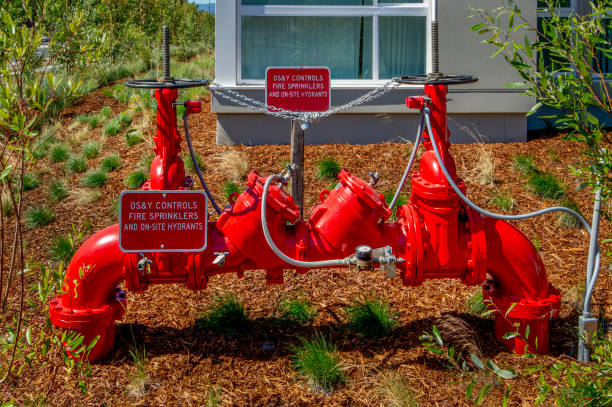Protecting Your Business: Backflow Prevention in Commercial Plumbing
Maintaining a smooth and efficient commercial plumbing system is crucial for the success of any business. One often overlooked aspect of plumbing system maintenance is backflow prevention. Backflow can pose serious health risks and legal consequences, making it imperative for businesses to invest in robust backflow prevention solutions. In this article, we’ll delve into the importance of backflow prevention in commercial plumbing and explore effective measures to safeguard your system.

Understanding Backflow and Its Risks
Backflow occurs when the flow of water in a plumbing system reverses, potentially causing contaminated water to mix with the clean supply. This can happen due to changes in water pressure, such as during water main breaks, high demand periods, or even due to back siphonage. Backflow can introduce harmful chemicals, bacteria, and other contaminants into the water supply, posing a significant health hazard to employees, customers, and the community.
The Importance of Backflow Prevention in Commercial Settings
Health and Safety: Backflow can lead to the contamination of potable water, which can result in widespread illnesses. Backflow prevention safeguards the health and safety of everyone who uses the water supplied by your commercial plumbing system.
Legal Compliance: Many jurisdictions have stringent regulations in place regarding backflow prevention. Non-compliance can lead to fines, legal actions, and damage to your business’s reputation. Implementing proper backflow prevention measures ensures you’re meeting legal requirements.
Business Continuity: A backflow incident can disrupt your business operations, leading to downtime, loss of revenue, and costly repairs. By investing in backflow prevention, you ensure the continuity of your business operations.
Effective Backflow Prevention Strategies
Backflow Preventer Installation: Work with a licensed plumber to install appropriate backflow preventers in your commercial plumbing system. These devices, such as double-check valves or reduced pressure zone (RPZ) valves, prevent water from flowing back into the supply lines.
Regular Testing and Maintenance: Backflow preventers require periodic testing and maintenance to ensure they function correctly. Establish a schedule for inspections and maintenance to keep your backflow prevention system in optimal condition.
Risk Assessment: Identify potential sources of backflow in your plumbing system. This includes irrigation systems, fire sprinkler systems, and any other connections to the potable water supply. Mitigate these risks with the right backflow prevention devices.
Employee Training: Educate your staff about the importance of backflow prevention and how to recognize signs of backflow. This awareness can help detect issues early and prevent potential contamination.
Crafting a Backflow Emergency Response Plan
Quick Action is Crucial: In case of a backflow incident, time is of the essence. Develop a comprehensive emergency response plan that outlines step-by-step procedures to contain and resolve the situation swiftly.
Isolation and Notification: Train your staff to isolate the affected area from the rest of the plumbing system and notify relevant personnel, including plumbers and health authorities.
Contact us for Backflow prevention for your Business
Backflow prevention is an integral part of maintaining a safe, compliant, and functional commercial plumbing system. By understanding the risks of backflow, investing in the right prevention measures, and staying proactive in maintenance, you can safeguard your business, protect public health, and ensure the seamless operation of your commercial establishment. Consult with a professional plumber to assess your backflow prevention needs and implement the best solutions for your specific requirements.

